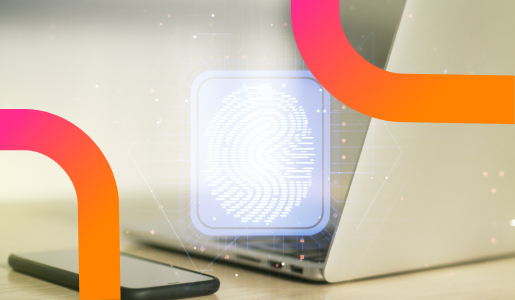As the digitisation of communications intensifies, the exchange of documents in electronic form has become the norm for both individuals and organisations. This structural shift, though already underway, has notably accelerated since the 2020 Covid-related lockdowns and, more recently, with the proliferation of generative artificial intelligence.
In this context, ensuring the authenticity and integrity of digital documents presents a significant legal and operational concern for businesses. The electronic seal is increasingly relied upon as a mechanism for establishing trust in dematerialised exchanges.
This article outlines five principal benefits of the electronic seal from a business perspective.

Sommaire
- Context: a decline of trust in digital documents
- 1. Guarantee of document integrity
- 2. Cost efficiency and operational optimisation
- 3. Reversal of the burden of proof
- 4. Restoring trust between parties
- 5. Creation of proof files with high probative value
- Evidency’s eIDAS-qualified electronic sealing service
Context: a decline of trust in digital documents
The intensification of digital exchanges goes together with a progressive erosion of trust: digital documents are increasingly perceived as unreliable, given how easily they can be falsified. Today, the production of forged invoices, certificates, contractual records or digital identities is accessible to any user through publicly available online tools. In this context, the capacity to guarantee both the origin and integrity of a document has become a strategic component of legal security, and trust now operates as a currency of exchange in digital interactions.
The European eIDAS Regulation (No. 910/2014) establishes a clear legal framework for securing electronic exchanges. Among the mechanisms it provides, the electronic seal is specifically intended to bind a legal entity to a digital document in a way that carries legal accountability.
This article outlines the five primary legal and operational benefits of this mechanism for businesses and organisations seeking to secure the evidential value of their digital operations.
1. Guarantee of document integrity
The electronic seal certifies that the document has not been altered since it was issued. Any attempt at alteration, even minor, invalidates the seal. This deters document falsification and secures the circulation of sensitive files. In practical terms, the seal can be verified directly within the PDF environment, including through standard tools such as Adobe Acrobat Reader, without requiring additional software.
2. Cost efficiency and operational optimisation
For organisations handling high volumes of documents, implementing electronic sealing via an API is the most efficient approach. Automation of the sealing process ensures systematic application of seals across all relevant files, in accordance with defined authenticity and integrity requirements.
This integration reduces manual workload, accelerates processing, and contributes to broader document lifecycle optimisation — combining legal reliability with gains in productivity and cost control.
3. Reversal of the burden of proof
When an electronic seal is generated using the company’s X.509 certificate and combined with an eIDAS-qualified timestamp, as is the case with Evidency’s sealing solution, the resulting seal possesses full probative force. Its legal effect is such that it is presumed valid until proven otherwise.
In the event of a dispute, it falls to the opposing party to demonstrate that the seal is defective or that the integrity of the document has been compromised. This reversal of the burden of proof constitutes a significant procedural advantage for the document holder.
4. Restoring trust between parties
The use of electronic seals within document workflows signals a deliberate commitment to evidentiary reliability. It fosters a climate of trust between parties, whether clients, partners, or regulatory bodies, by demonstrating a structured approach to securing digital records.
In regulated industries such as insurance, banking, and e-commerce, the presence of an electronic seal serves not only as a deterrent to tampering, but also as evidence of compliance with legal and sectoral obligations.
5. Creation of proof files with high probative value
Electronic seals are typically applied to individual documents, allowing recipients to verify the authenticity of their origin. However, their application extends beyond isolated files.
They can also be used to seal a collection of evidentiary elements — such as screenshots, system logs, and supporting documents — into a unified file. This is particularly relevant in the context of online reports, where the sealing process, combined with qualified timestamping, confers a presumption of reliability on the entire file.
The result is a consolidated, tamper-proof evidentiary record whose integrity is preserved over time and whose admissibility can be upheld before a court or regulatory authority.
Evidency’s electronic sealing service
Evidency provides an electronic sealing service compliant with the eIDAS Regulation, designed to integrate seamlessly into existing information systems via API. This integration enables the automated sealing of digital documents, regardless of volume, without disrupting existing processes.
The solution addresses entities that generate large volumes of documents requiring systematic sealing, as well as software publishers seeking to enhance their platforms with a layer of digital integrity and authenticity.
To support implementation, Evidency offers a dedicated technical sandbox that facilitates end-to-end testing under operational conditions. Development teams can validate their use cases and workflows with the assistance of detailed technical documentation, organised by function — sealing, timestamping, and archiving — and available at: https://docs.evidency.io/docs/overview.
Key takeouts on the benefits of electronic seals
- An electronic seal is the digital equivalent of a company stamp.
- Technically, it results from the combination of a digital identity certificate and a timestamp token affixed to a PDF document.
- This mechanism guarantees the authenticity, integrity and date of the sealed document.
- It helps reduce document fraud by enabling straightforward verification of both the document’s origin and its integrity.
- When applied in conjunction with a qualified timestamp issued under the eIDAS Regulation, the seal acquires probative force and is recognised by European courts and the UK.
Disclaimer
The opinions, presentations, figures and estimates set forth on the website including in the blog are for informational purposes only and should not be construed as legal advice. For legal advice you should contact a legal professional in your jurisdiction.
The use of any content on this website, including in this blog, for any commercial purposes, including resale, is prohibited, unless permission is first obtained from Evidency. Request for permission should state the purpose and the extent of the reproduction. For non-commercial purposes, all material in this publication may be freely quoted or reprinted, but acknowledgement is required, together with a link to this website.



